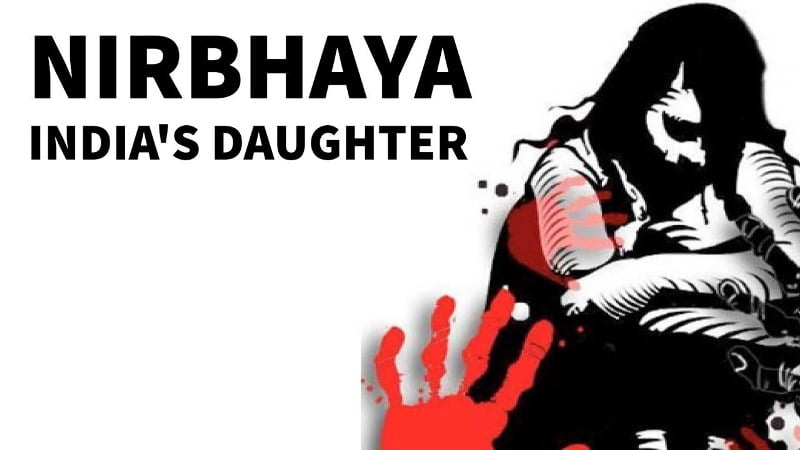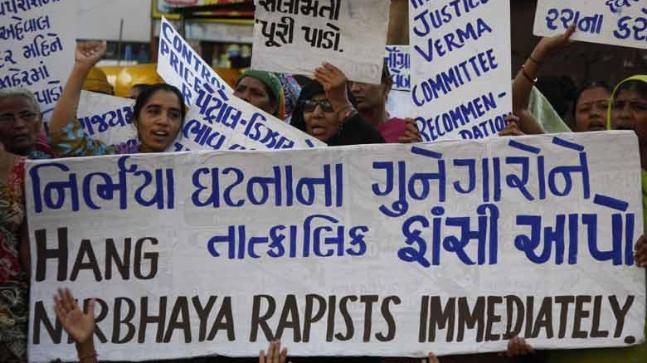Posted by Anchal Batheja
Nearly 4 lakh babies are born in India on a daily basis. The perturbing fact however is, that our obsession with euphemisms gives birth to 90 Nirbhayas (rape victims) every day. Before referring to something tragic as being heroic, we need to reflect, introspect and ask some really basic questions to ourselves.
Who is Nirbhaya?
What does ‘Nirbhaya’ mean?
What is ‘Bhaya’?
Does ‘Bhaya’ make Nirbhaya what she is?
Does anyone here want to become Nirbhaya? Do we need more Nirbhayas?

Image Source: Kalinga TV
Well, here is the answer. Nirbhaya is every woman who is constantly in the fear of being harassed, raped or killed. In the popular conception, Nirbhaya is fearless—she is dauntless and she’s a fighter. Bhaya, on the other hand is just fear. Bhaya makes Nirbhaya what she is. She would have not been Nirbhaya, had she not been the source of bhaya, in the first place. Frankly no woman would ever want to become Nirbhaya. No woman would ever want to encounter the fear (bhaya) that makes Nirbhaya what she is. India has many known and unknown women who have succumbed to bhaya and the birth of every Nirbhaya makes bhaya stronger and mightier.
No woman would ever want to encounter the fear (bhaya) that makes Nirbhaya what she is. India has many known and unknown women who have succumbed to bhaya and the birth of every Nirbhaya makes bhaya stronger and mightier.
If Nirbhaya is a representation of tragedy and fear, and not a saga of victory and fearlessness, then why call a woman Nirbhaya? Why not call her by her real name? She can’t be called by her real name because the law prohibits the disclosure of the name of a rape victim and such disclosure is a punishable offence under Section 228 of the IPC. Further, in the case of Nipun Saxena V. union of India, a division bench of the Supreme Court held that, not only the name, but the identity of the rape victim should also not be discernible
Although an alternate view, as pointed by Nicolas Cristof in his book, asserts that people care about an issue only if they are told a story about an individual. He points out that social psychology and research underscores the fact that people do not care about classes of individuals, and they relate more if they are familiarised with names and faces of these victims and survivors. This familiarisation shocks the social conscience more than anything else and translates into a massive outrage which is indispensable to curb rapes.
Also read: It’s Been 4 Years – What Has The Nirbhaya Fund Done So Far?
However, the Nipun Saxena case brings a different defense in favour of Section 228 to the forefront. The purpose behind aforementioned Section is to prevent any kind of stigma, scrutiny or hostile discrimination against the victim or the survivor. Thus, this provision of IPC is grounded in ideas of journalistic ethics and it is considered to be a manifestation of victim friendliness of the law.

Image Source: Amazon
Although this provision and the reasoning of Nipun Saxena is understandably a good law for the time being, as it helps in curbing the criminalisation of the victim by concealing their identity. But this law encourages the media houses to create euphemisms like Nirbhaya that ends up romanticising the tragedy of the victim. Both the law and the creation of Nirbhaya, in the popular conception by media houses in response to the law, is nothing but escapism.
Although this provision and the reasoning of Nipun Saxena is understandably a good law for the time being, as it helps in curbing the criminalisation of the victim by concealing their identity. But this law encourages the media houses to create euphemisms like Nirbhaya that ends up romanticising the tragedy of the victim.
The society should not escape from its evils by calling her a fearless fighter, when she is harassed and raped or by calling her a martyr, when she is mutilated and murdered. There is nothing commendable about giving birth to 90 Nirbhayas every day. There is nothing commendable about calling these 90 women Nirbhaya at the first place.

Image source: India Today
It is also to be noted that this law and the acts of hiding the identity of the victims and survivors is not helping as there are stories of rape victims committing or attempting to commit suicide, day in and day out. This points to a larger problem that the austrisisation, stigmatisation and criminalisation of the victims is prevalent despite the active attempts of the law to avoid such stigmatisation. Therefore, law and its escapism cannot solve the problem at hand. The problem can be solved only when we realise and understand that rapes are the problem, and not the rape victims. The larger idea should be to reprimand rape and not to vilify or super humanise the victim.
Also read: Capital Punishment For Rape: The Death Of A Debate | #GBVinMedia
If this idea permeates into the consciousness of every individual, we would not need a Section 228 or need a name like Nirbhaya. We won’t need to conceal the real identity of the victim and we won’t need to romanticise her tragedy. She will be her own self and not a mere euphemism. Shakespeare was not exactly right when he said, “what’s in the name?” Trust me there’s a lot in it.
Anchal is a second year student at national Law school of India University, Bangalore. You can find her on Facebook.
Featured Image Source: India Today
About the author(s)
Anchal is a second year student at national Law school of India University, Bangalore.




